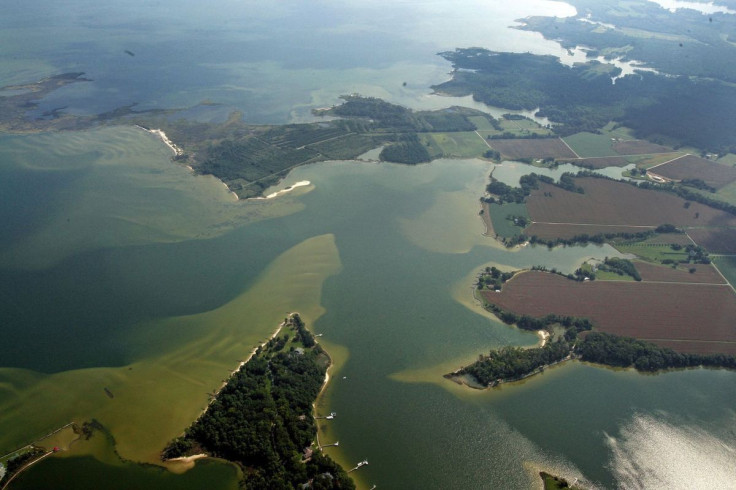Chesapeake Bay's Dead Zones: Researchers Estimate That Hypoxic Area Biggest Since 2014

A study conducted by the researchers from Virginia Institute of Marine Science (VIMS) has revealed the oxygen-deprived dead zones in the Chesapeake Bay —the largest estuary in the United States — are at their highest levels since 2014. The research comes after federal scientists made similar predictions.
Dead Zones are the hypoxic areas in water bodies where there is oxygen depletion. These regions cannot support aquatic life forms that need water to breathe. The oxygen levels in the Chesapeake Bay — the indentation in the Atlantic Ocean is surrounded by the U.S. states of Maryland, Delaware, Pennsylvania, New York State, District of Columbia, and Virginia — are so low that pockets where hypoxia is seen no longer support fish, crabs, and other aquatic organisms.
The researchers calculated the hypoxity of water levels every day. Various hypoxia metrics were put in place by the team from VIMS in Gloucester Point. The average summer hypoxic values and the annual average values were obtained by adding daily values.
In 2017, 919 cubic kilometers was found to be hypoxic compared to the 833 cubic kilometers in 2014. This accounted for a 10 percent overall increase in hypoxic areas. This value was even lower in 2015 with only 757 cubic kilometers was found to be hypoxic. The team says this level of hypoxia occurs when there is large amounts of nitrogen is introduced to the watershed. Rainwater carries soil which has fertilizers, a rich source of nitrogen.
Standard dissolved oxygen level in seawater is around 7 to 8 milligrams per liter. According to the team of researchers, anything below 4 milligrams will start affecting marine life. A report published in the Daily Press said that water with less than 0.2 milligrams of oxygen per liter is called anoxic and samples with no oxygen are called hypoxic.
When nitrogen enters water systems, there is an explosive growth of algal blooms. The team says that this effect wiped out oxygen from large parts of the bay. Susquehanna, which is the biggest tributary of the bay, was found to be the biggest contributor of nitrogen. This river is famous for its alarming pollution levels. It runs through Maryland, New York, and Pennsylvania before emptying into the Chesapeake Bay.
The National Oceanic and Atmospheric Administration (NOAA) have said the warnings were given out for heavy rain forecasts in the northern parts of the watershed. The report says the January to May period saw constant erosion, which led to an increase in nitrogen levels in the water.
Robert Magnien, director of NOAA’s Center for Sponsored Coastal Research said that “More work needs to be done to address nonpoint nutrient pollution from farms and other developed lands to make the bay cleaner for its communities and economic interests.”
The report published last month also underlined the mainstem of the bay running through Maryland showed that the dissolved oxygen levels increased in late August, marking higher than average levels. However, The Maryland Department of Natural Resources cautioned that its results were incomplete due to bad weather conditions, which led to some wrong recordings. The data was gathered from the southern regions of the Potomac River all the way up to the Virginia state line.
© Copyright IBTimes 2025. All rights reserved.




















